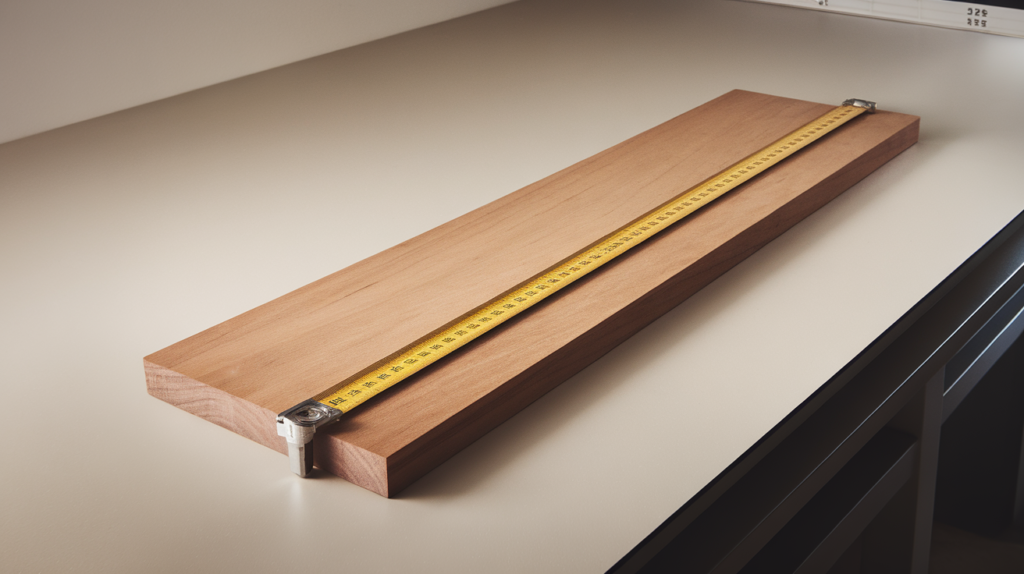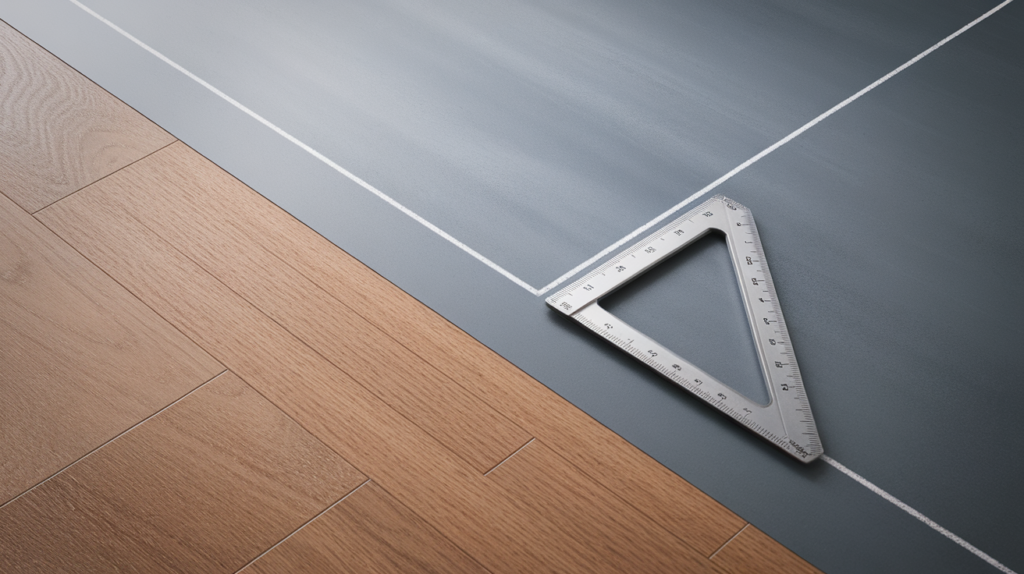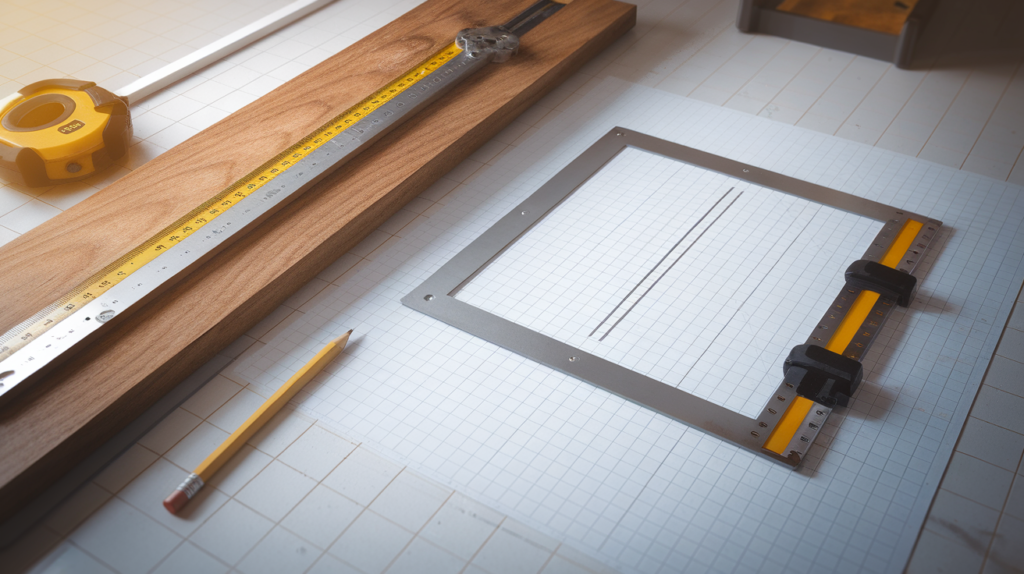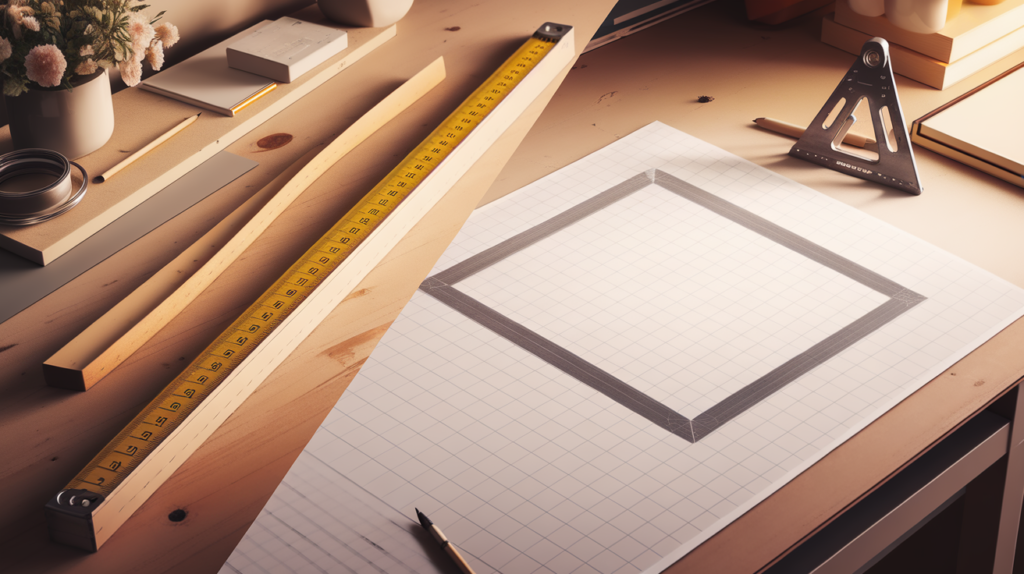Have you ever stood in a hardware store, looking at your shopping list, and wondered if you should measure in linear feet or square feet?
You’re not the only one – this mix-up happens more often than you think to new DIYers and seasoned pros. Getting the wrong measurement means you could buy way too much material and spend extra money.
Or worse, you might not buy enough and end up wasting time on another trip back to the store. I’ve been in that spot, and I know how frustrating it can be.
In this guide, I’ll explain the real difference between linear feet and square feet in simple, clear terms.
You’ll learn when to use each type of measurement and how to calculate them correctly for your project.
By the end, you’ll be able to walk into any store, ask for exactly what you need, and skip the guesswork completely. Let’s make this easy to understand!
What is Linear Feet?

A linear foot is just a way to measure length in a straight line. It tells you how long something is from one end to the other, kind of like measuring the length of a wall or a piece of wood.
When you measure in linear feet, you’re only looking at one thing: length. The width or height doesn’t matter at all for this kind of measurement.
So if you have a board that’s 6 feet long, it’s 6 linear feet – even if it’s skinny or wide. That doesn’t change the length.
People sometimes call it “linear footage” or “lineal feet,” but those terms all mean the same thing.
Things like baseboards, crown molding, and fencing are usually sold by the linear foot. That’s because these materials are meant to run in a straight line, and you need to know their length, not width.
What is Square Feet?

Square feet is a way to measure area, which means the amount of surface something covers. It’s different from just measuring length because it tells you how much total space there is.
One square foot is a square that’s 1 foot long on each side.
To figure out square footage, you multiply the length by the width of the space, both measured in feet.
For example, if a room is 10 feet long and 12 feet wide, you’d multiply 10 × 12 to get 120 square feet of space.
Knowing square footage is important when buying things like flooring, estimating the amount of paint you’ll need, or estimating heating and cooling.
It helps you get the right amount of material for the job so you don’t overbuy or come up short.
Linear Feet vs Square Feet

Linear Feet and Square Feet are used for measurement, but they couldn’t be more different. I’ve created an easy to follow list and table to help you out:
1. Dimension Focus
Understanding the difference between linear feet and square feet helps you measure correctly and avoid confusion.
Both are important, but they tell you different things depending on what you’re measuring.
| Measurement Type | What It Measures | Includes Width? |
|---|---|---|
| Linear Feet | One dimension – length only | No |
| Square Feet | Two dimensions – length and width | Yes |
Knowing whether you need a length or an area measurement can make all the difference in how accurately you plan and how much material you buy.
Use this simple guide to keep things clear and get the job done right.
2. Use Cases
Knowing when to use linear feet versus square feet can help you buy the right amount of materials for your project.
These measurements are used in different ways depending on what you’re working with.
| Measurement Type | Examples of Use |
|---|---|
| Linear Feet | Baseboards, crown molding, fencing, lumber, fabric, countertops, road distances |
| Square Feet | Flooring, paint coverage, drywall, roofing, land area, carpet, wallpaper, room sizes |
Use linear feet when you’re measuring something that runs in a straight line. Use square feet when you’re covering a surface or working with an area.
Understanding this difference keeps your planning and shopping simple and accurate.
3. Calculation
Calculating linear feet and square feet is simple once you understand the process. Each has its own method, and using the right one ensures you get accurate numbers for your project.
| Measurement Type | How to Calculate |
|---|---|
| Linear Feet | Measure length in feet. If using inches, divide by 12. Add the lengths of all pieces. |
| Square Feet | Measure length and width in feet. Multiply them. For odd shapes, divide into rectangles and add the areas. |
For example, if you have three wall sections measuring 10 ft, 12 ft, and 8 ft, you’ll need 30 linear feet. If a room is 15 ft by 12 ft, you’ll need 180 square feet of material.
For tricky spaces like L-shaped rooms, break them into smaller rectangles, measure each one, and then add them all together.
4. Units
Understanding how linear feet and square feet are labeled can help you read product prices correctly. These abbreviations appear often in stores, on packaging, and in online listings.
| Measurement Type | Common Abbreviations | What It Means |
|---|---|---|
| Linear Feet | ft, lin ft, LF | Price is based on length only, not width |
| Square Feet | sq ft, ft², SF | Price is based on total area (length × width) |
For example, if a product is listed at $5 per LF, you’re paying $5 for each foot of length. But $3 per square foot means you’re paying for every square foot of surface it will cover.
Knowing the difference helps you compare prices and choose the right option for your project.
Conclusion
Choosing between linear feet and square feet isn’t about what’s easier. It’s about using the right measurement for the task.
Use linear feet for things that run in a straight line, like trim, fencing, or baseboards. Use square feet when covering an area, like with flooring, tile, or paint.
Mixing them up can cause problems. You might buy too much and waste money—or not enough and need to stop halfway.
Now that you know the difference, you can plan smarter and shop with confidence. Just remember: linear for length, square for area.
Have you ever made a mistake with this before? Or do you have a trick that always works? Share it in the comments—I’d love to hear it!
Frequently Asked Questions
How do I measure linear feet for crown molding with corner pieces?
Measure the length of each wall where crown molding goes. If using pre-made corner pieces, subtract 3–4 inches per corner from your total.
Can I use the same measurement approach for all types of flooring?
Not exactly. All flooring is sold by square foot, but waste varies. Hardwood and laminate need extra for cuts, tile needs 10–15% more for breakage, and carpet may need more for pattern matching.
How do I convert between linear meters and linear feet?
To convert linear meters to feet, multiply by 3.28. To convert feet to meters, divide by 3.28. This gives you the correct length in the unit you need for your project.
Are linear feet and running feet the same thing?
Yes, linear feet and running feet mean the same thing. Both measure straight length in feet, regardless of width or height. “Lineal feet” is also another term that means the exact same thing.

